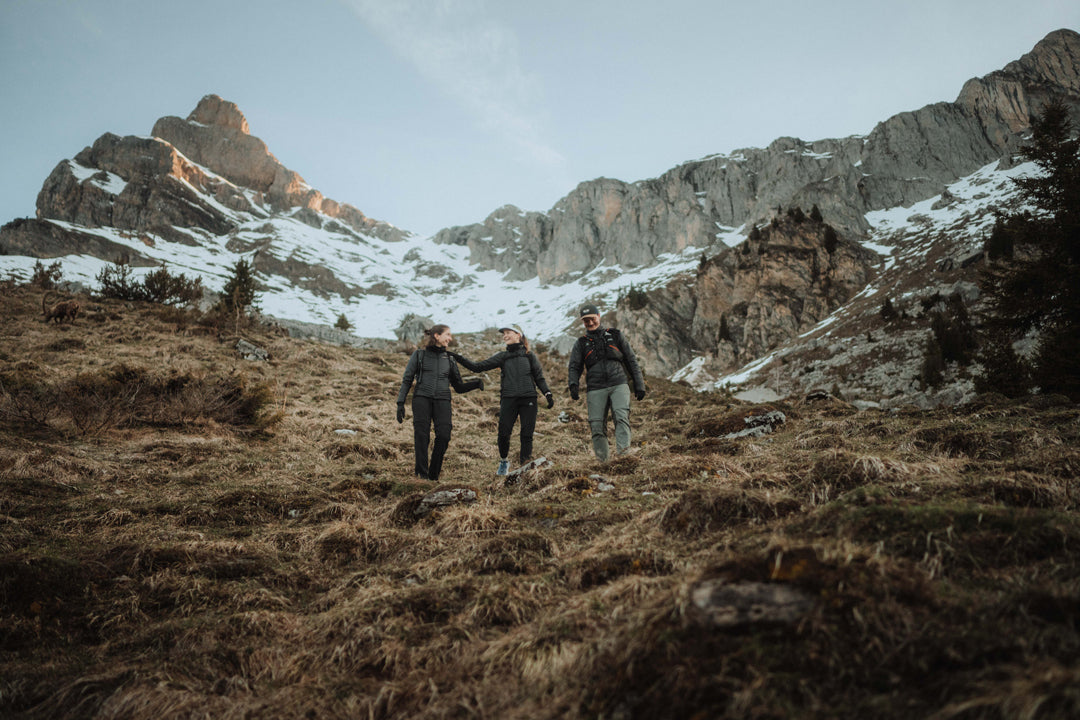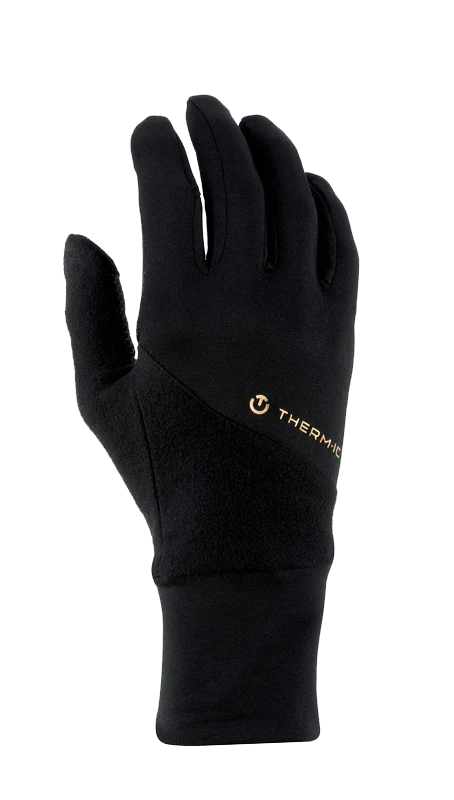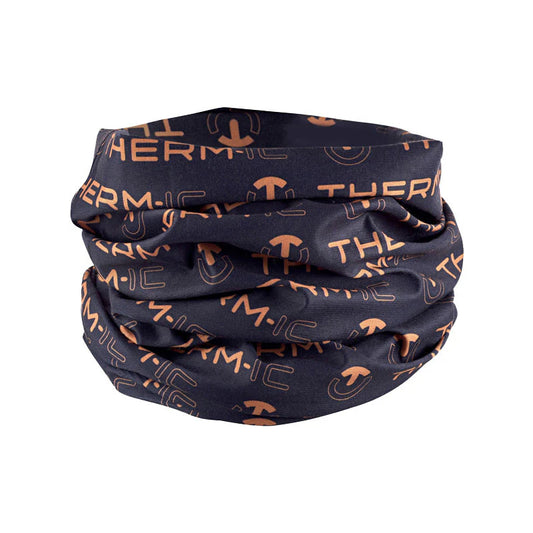Control your temperature: thermoregulation at the heart of outdoor gear!


Thermoregulation is a scientific term – almost barbaric – that can be intimidating. However, behind this word – which may bring back memories of your physics and chemistry lessons – lies a simple process: your body's ability to regulate its temperature. In response to external conditions, your body naturally puts mechanisms in place to combat the cold or dissipate excess heat. This is done in order to maintain, as best as possible, its ideal operating temperature: 37°C. However, sometimes this ability to adapt is not enough: the cold becomes so extreme or the heat so intense that the body needs help to regulate its temperature. This is where Therm-ic's expertise, innovations and outdoor equipment come into play. We help athletes and enthusiasts keep their bodies at the right temperature, whether they are enjoying everyday adventures or pursuing sporting excellence. We promise them enjoyment, comfort and performance in conditions that put their bodies to the test.
How does the human body regulate its temperature? What actually happens when your extremities are gripped by the cold or when you sweat profusely in the heat? And how does our outdoor equipment improve your thermoregulation?
You will find the answers to these questions in this article dedicated to natural thermal regulation. To learn all about thermoregulation, click here!
‘Thermoregulation is your body's ability to regulate its temperature.’
The answer is simple: 37°C. In other words, 37°C is the optimal temperature for human metabolism and muscle function. To be more precise, the body's natural thermal regulation fluctuates between 36.1°C – in the middle of the night, when we are at our most relaxed – and 37.8°C – in the late afternoon, when we are most active. This normal body temperature can also vary depending on age, gender, physical activity, stress and, in women, the menstrual cycle.
It is important to note that when your body temperature exceeds 38°C, this is referred to as fever or even hyperthermia, and when it falls below 35°C, it is referred to as hypothermia.
"The human body functions optimally at 37°C. "
Regardless of the conditions, the human body tries to maintain its temperature at around 37°C through a natural mechanism called thermoregulation. In a nutshell – we will come back to this in more detail later in the article – our body dissipates heat when the mercury rises and produces it when it is cold.
This absolutely vital thermoregulation process is mainly controlled by an area of the brain called the hypothalamus, which acts as an internal thermostat to balance the body around its ideal temperature of 37°C.
"Regardless of the conditions, the human body tries to maintain its temperature around 37°C through a natural mechanism called thermoregulation."
Due to climate change, summers are becoming increasingly hotter every year, exposing our metabolisms to abnormally high temperatures. In order to cool down, our bodies sweat. Sweating is the body's most effective response to heat.
What exactly happens when we sweat? When it's hot, our sweat glands – mainly located under the armpits, on the forehead, back, palms of the hands and soles of the feet – produce sweat, a liquid composed mainly of water and mineral salts. When this sweat evaporates from the surface of the skin, it carries heat away with it, giving the body a feeling of coolness, like the wind blowing on our skin when we get out of the water or the ocean.
Another mechanism is involved in thermoregulation when it is hot: vasodilation. In addition to perspiration, blood vessels dilate to bring blood closer to the surface of the skin, thereby promoting heat dissipation through radiation or convection.
Perspiration, evaporation and vasodilation: these are the three natural processes that enable the body to continue functioning properly, even when the summer heat sets in.
‘Sweating is actually the body's most effective natural response to heat.’
Thermoregulation tends to reduce body temperature when it is hot, but conversely, it also allows heat to be produced when it is cold.
Unlike ‘heat waves’, during which the body seeks to dissipate its internal heat, when it is cold, the body tries by all means to produce and then retain heat. This is in order to protect vital organs in particular.
The first reflex of a body that is cold is vasoconstriction. This means that the blood vessels near the surface of the skin contract to limit blood flow to the periphery and thus prevent heat loss through radiation. However, this causes the extremities to cool down – we will come back to this later – in order to maximise the protection of vital organs.
The body's second response to cold is shivering. You have probably wondered why we shiver when it is chilly. This is actually a natural reaction of the body trying to regulate its temperature! Shivering is nothing more than rapid, involuntary muscle contractions which, through this activation of the muscles, even if minimal, generate a little heat.
Finally, when exposed to cold, the metabolism activates its chemical thermogenesis. This means that it produces heat by converting energy from fat stores. This is one of the reasons why you've heard your grandparents urge you to have seconds of raclette or dessert: because a small reserve of adipose tissue under the skin helps protect against the cold. And it's also why thin people suffer the most in winter!
"You've probably wondered why we shiver when it's chilly. It's actually a natural reaction of the body trying to regulate its temperature! "
As soon as the temperature drops – whether you're out skiing, running in winter or just going to work – do your hands, feet, nose and ears quickly feel cold? This is a completely natural phenomenon linked to thermoregulation, the main purpose of which is to protect your vital organs. When conditions become extreme, your central nervous system concentrates its energy on sending heat to the parts of the body that are essential for its proper functioning, such as the heart, lungs, liver and brain. At this point, it neglects your extremities, which receive less blood flow. Your hands, fingers, feet, ears and nose are then less warmed by the blood circulation and become more vulnerable to the cold.
In addition to this vasoconstriction, which gives priority to vital organs, there are two other reasons why you feel colder in your extremities:
‘At Therm-ic, we design and develop outdoor equipment that supports your natural thermoregulation to effectively protect your extremities from the cold!’
The human body is an amazing machine, but it has its limits. Your body has exceptional adaptive abilities, but external conditions are sometimes so extreme that it cannot cope on its own. This is why Therm-ic exists: to innovate and develop comfortable, high-performance products to accompany you on your adventures, in intense cold or extreme heat.
To combat the heat, we offer a range of outdoor gear that promotes cooling strategies and prevents you from overheating. These are must-haves for continuing to exercise or simply making your everyday life more pleasant during these increasingly hot summers:
At Therm-ic, we support your thermoregulation whatever the season and whatever the environment you find yourself in. We also offer a wide range of products – designed in collaboration with our adventurers, mountaineers and top athletes – to protect you from the cold:
"This is what we do at Therm-ic: innovate to develop comfortable, high-performance products to accompany you on your adventures, in intense cold or extreme heat."








